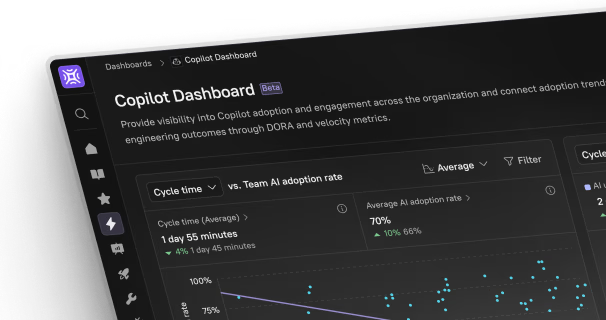In today’s fast-paced work environment, efficiency isn’t optional—it’s survival. One of the most exciting advancements helping professionals stay ahead is AI copilots. Whether you’re crafting emails, managing spreadsheets, or planning content strategies, copilots are rapidly becoming indispensable. This guide explores the best ways to use Copilot at work with practical examples, real feedback, and honest pros and cons.
👉 Explore more real-world strategies in The Ultimate Copilot Playbook by Singleclic.
Why Copilots Matter (And Why Everyone’s Talking About Them)
Before we dive into tips, it’s worth understanding what a “copilot” really is. Tools like Microsoft 365 Copilot, GitHub Copilot, Notion AI, and ChatGPT act like an assistant built right into your daily work tools. They can draft documents, summarize meetings, write code, create to-do lists, and even automate repetitive tasks.
“We’ve seen a 30% boost in team output since rolling out copilots into our workflow,” says Tamer Badr, founder of Singleclic. “But more importantly, we’ve given our people back time for creative and strategic work.”
People Are Always Asking…
What’s the best way to use Copilot? Is it just another trend?
Here’s the truth: if you’re only using Copilot to summarize emails or fix typos, you’re missing out. The best ways to use Copilot at work go far beyond that—let’s dive in.
Top 10 Best Ways to Use Copilot at Work
1. 📝 Automate Report Writing
Instead of starting from scratch, use Copilot to:
- Draft weekly team updates
- Summarize meeting transcripts
- Auto-generate customer success reports
Drawback: Sometimes it misses nuance, so always review before sharing externally.
2. 📊 Analyze Data in Seconds
In tools like Excel or Google Sheets:
- Ask Copilot to create pivot tables
- Generate charts from raw data
- Spot trends and anomalies
Drawback: Copilot may oversimplify large data sets—manual validation is still key.
3. 💬 Draft and Personalize Emails
Need to respond to 50 client emails? Copilot can:
- Write polite follow-ups
- Adjust tone (e.g. formal, friendly)
- Translate responses
Drawback: Repetition in phrasing—always inject your human voice.
4. 🧠 Brainstorm Creative Ideas
From content calendars to product names:
- Ask for blog titles with SEO focus
- Generate product feature ideas
- Draft ad copy or campaign hooks
Drawback: Sometimes it’s too generic—refine prompts to get creative gems.
5. 📅 Summarize Meetings & Action Points
Copilot tools integrated with Teams or Zoom can:
- Transcribe meetings
- Extract key decisions
- Suggest action items
Drawback: Accuracy depends on audio quality and clear speaking.
6. 🧾 Improve Documentation
For devs or operations teams:
- Use GitHub Copilot to write code comments
- Create internal process docs
- Convert raw info into readable guides
Drawback: May miss context—have a human review for edge cases.
7. 📌 Prioritize Tasks with AI To-Do Lists
Input all your scattered notes and:
- Get an auto-organized list
- Group tasks by urgency
- Set reminders or auto-schedule in calendars
Drawback: Doesn’t replace true task management tools just yet.
8. 📣 Create Presentations on the Fly
In PowerPoint or Google Slides:
- Generate a slide deck from a paragraph
- Suggest slide titles and structure
- Auto-fill placeholder content
Drawback: Visual design still needs human finesse.
9. 💻 Accelerate Coding with GitHub Copilot
Developers swear by:
- Auto-suggested code
- Inline bug fixes
- Code documentation help
Drawback: Don’t trust it blindly—always test Copilot-suggested code.
10. 🔍 Internal Knowledgebase Search
Need to find that old onboarding doc or contract clause? AI copilots help:
- Search based on natural language
- Summarize the results
- Suggest follow-up questions
Drawback: Dependent on integrations with company systems like Confluence or Notion.
Tamer Badr Weighs In
Tamer Badr, owner of Singleclic, shared his thoughts:
“AI copilots are not just tools—they’re teammates. But like any teammate, they’re only as good as how you train them. Give clear instructions, review output, and don’t expect miracles. Copilots should empower your work, not replace it.”
Real User Reviews
★★★★★ – Product Manager, SaaS Startup
“My Copilot drafts my investor updates and helps prep presentations. Saves me hours every week.”
★★★★☆ – HR Director, Marketing Agency
“It’s amazing for policy writing and internal communication. Just wish it understood context better.”
★★★★☆ – Senior Developer
“GitHub Copilot feels like pair programming on steroids. But yeah, don’t forget your own debugging!”
Honest Look at Limitations
While Copilots can supercharge your day, here are some caveats to keep in mind:
| Area | Limitation | Workaround |
| Creativity | Generic output | Refine your prompts |
| Accuracy | May hallucinate info | Always verify |
| Data Handling | Not suited for complex datasets | Use traditional tools for analysis |
| Privacy | May store your inputs | Check data policies |
| Over-reliance | Skills may degrade | Use as assistant, not crutch |
FAQs
Is Copilot safe for confidential work?
Most tools encrypt data, but always review your company’s data privacy policies. Avoid sharing sensitive information without proper access controls.
Can Copilot replace my assistant?
It can handle routine admin tasks, but not nuanced planning or human judgment. It’s a helper, not a strategist.
Do I need to learn new skills?
Not really. If you can use Google Docs or Excel, you can use a Copilot. Just start with simple prompts like, “Summarize this email” or “Draft a client intro.”.
Final Word
The best ways to use Copilot at work aren’t about gimmicks or flashy AI demos. It’s about reclaiming time, improving focus, and scaling your impact. From writing and coding to planning and analyzing, these digital teammates are here to stay—if you know how to use them right.
And remember: the magic isn’t just in the tool. It’s in how you use it.









